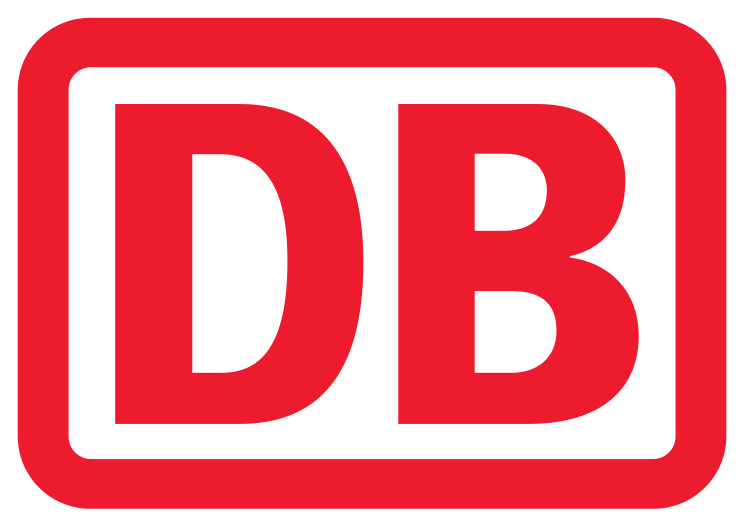Book 2 hours of individual coaching with your trainer.More info
Intensive change management qualification program
Managing and supporting change processes in the company

Certified by the Hochschule der Wirtschaft für Management (HdWM), Mannheim

This further training course was designed in cooperation with the Mannheim University of Applied Management Sciences and meets the university's quality standards in terms of overall concept, content, trainers and examination. As a result, participants benefit from high-quality qualifications with guaranteed topicality, high practical relevance and excellent trainers.
Basics of change management (CM)
- Definition of
- Differentiation from project management
- Phases of change management
- Impact on people and organization
- Success factors
- Basic processes
Designing change projects as a project
- The systemic approach
- Clarifying the assignment and forming hypotheses
- Analysis tools
- Roles and power relations
- Cooperation partner
Planning and designing the change process
- Change architecture
- The phases
- Resistance and conflicts
- Processing of practical examples
- Transfer task
The role of the manager in change
- Communication design
- Communication tools
- Sustainability
- Creativity
Implementing and managing the change process - with a positive self-image
- The importance of emotions
- Appropriate interventions
- The 6 box model
- Team management and management impulses
- Self-confident action
Dealing with difficult situations - preparing for the future
- Avoid cardinal mistakes
- Use the 7 basic processes and maintain an overview
- Success factors
Contents
The concept
- The Change Management Intensive qualification program is divided into two blocks. Reflection, application and customized adjustment of what you have learned in your professional sphere of activity takes place between the two blocks.
- The common thread throughout the entire duration of the training is ensured by the consistent assignment to the seven basic processes.
- Our principle: know-how and experience from practitioners for practitioners.
- You can actively contribute your own change projects from your business practice to the training .
The central questions here are: What exactly is needed for the successful and sustainable adjustment of processes and structures? How can we ensure that employees support the necessary changes and join the new initiatives?
- Developing a shared vision for the company is one of the key issues in implementing beneficial and constructive change.
- Change encompasses all changes to corporate strategy or values, technology or structures and processes that have far-reaching consequences for people, organization, business and processes and should be accompanied by systematic change management.
- Change management means a proactive, systematic and systemic approach that anchors the change in the company in the long term.
Contents
Block 1: 3 days
Basics of change management (CM)
- Definition of change management - and the difference to project management.
- What can you see - and what happens behind the scenes?
- Rational and emotional phases of change management.
- Impact of change on people and the organization.
- Success factors of change management.
- The seven basic processes in change management.
Designing change projects as a project
- The basics of the systemic approach to CM planning and implementation.
- Starting the change - clarifying the mission and forming hypotheses.
- Know analysis tools (e.g. stakeholder, risk, force field) and use them skillfully on your own project.
- Know and classify roles in change, recognize power relations and use them skillfully.
- Cooperation: recognize and establish the participation and support system.
Planning and designing the change process
- Establishment of a constructive change architecture.
- Use the phases in the change process.
- Prevent resistance - whenever possible!
- Recognize resistance and conflicts - and deal with them in the best possible way.
- Transfer task until the second block.
Block 2: 3 days
The role of communication in change
- Essential: an adequate communication design!
- Which communication tools are effective and motivating.
- Tools and tips: how to bring changes in the organization to life.
- Creating sustainability with rituals.
- With creativity to more success and acceptance.
Implementing and managing the change process - with a positive self-image
- "Feel the change" - the importance of emotions.
- Choose the right interventions: Knowing and using tools.
- Diagnostic tools for targeted analyses and adjustments in the change process.
- Use the possibilities of team management, set management impulses.
- Influence the management of change as a leader and act consistently.
- Make the most of yourself - know yourself and act with confidence.
Dealing with difficult situations - preparing for the future
- Avoid cardinal errors during implementation.
- Processing of practical examples from your change projects with a focus on "Dealing with resistance".
- Wrap-up: using the seven basic processes, maintaining an overview.
- Develop success factors for the current change process.
- Use what you have learned and move forward.
Learning environment
In your online learning environment, you will find useful information, downloads and extra services for this training course once you have registered.
Your benefit
- You will receive a sound qualification in change management - and know that in addition to the obvious changes, there is a lot going on behind the scenes.
- You will learn how to plan and implement changes in such a way that you achieve a high level of acceptance among yourself, the participating managers and employees and that they internalize and actively live the changes.
- You will learn proven methods, procedures and tools that you can use in your own projects.
- You reflect on your behavior in change situations using the Riemann-Thomann model.
- You can act confidently and safely when dealing with difficult situations in change processes.
Methods
Lecture and discussion, group work, collegial advice from the attendees or from the trainers on their own change projects, exchange of experience, practical transfer.
Tool
Recommended for
Circle of participants
Executives, project managers, HR management, staff units (e.g. strategy and corporate development) with management responsibility or technical authority to issue instructions
Participation requirements
It makes sense if the attendees have a leading role in current or planned change projects. Before the start of the training program, participants are asked to provide a brief description of the change so that the trainers can prepare themselves ideally and adapt to the specific practical cases.
Final examination
You will apply the training content in a written case study. It is submitted by e-mail four weeks after completion of the second module. After passing the written examination, you will receive a certificate from the Haufe Akademie and the Mannheim School of Management (HdWM). This documents your sound knowledge as a basis for the further development of your professional career.
Basics of change management (CM)
- Definition of
- Differentiation from project management
- Phases of change management
- Impact on people and organization
- Success factors
- Basic processes
Designing change projects as a project
- The systemic approach
- Clarifying the assignment and forming hypotheses
- Analysis tools
- Roles and power relations
- Cooperation partner
Planning and designing the change process
- Change architecture
- The phases
- Resistance and conflicts
- Processing of practical examples
- Transfer task
The role of the manager in change
- Communication design
- Communication tools
- Sustainability
- Creativity
Implementing and managing the change process - with a positive self-image
- The importance of emotions
- Appropriate interventions
- The 6 box model
- Team management and management impulses
- Self-confident action
Dealing with difficult situations - preparing for the future
- Avoid cardinal mistakes
- Use the 7 basic processes and maintain an overview
- Success factors
Contents
The concept
- The Change Management Intensive qualification program is divided into two blocks. Reflection, application and customized adjustment of what you have learned in your professional sphere of activity takes place between the two blocks.
- The common thread throughout the entire duration of the training is ensured by the consistent assignment to the seven basic processes.
- Our principle: know-how and experience from practitioners for practitioners.
- You can actively contribute your own change projects from your business practice to the training .
The central questions here are: What exactly is needed for the successful and sustainable adjustment of processes and structures? How can we ensure that employees support the necessary changes and join the new initiatives?
- Developing a shared vision for the company is one of the key issues in implementing beneficial and constructive change.
- Change encompasses all changes to corporate strategy or values, technology or structures and processes that have far-reaching consequences for people, organization, business and processes and should be accompanied by systematic change management.
- Change management means a proactive, systematic and systemic approach that anchors the change in the company in the long term.
Contents
Block 1: 3 days
Basics of change management (CM)
- Definition of change management - and the difference to project management.
- What can you see - and what happens behind the scenes?
- Rational and emotional phases of change management.
- Impact of change on people and the organization.
- Success factors of change management.
- The seven basic processes in change management.
Designing change projects as a project
- The basics of the systemic approach to CM planning and implementation.
- Starting the change - clarifying the mission and forming hypotheses.
- Know analysis tools (e.g. stakeholder, risk, force field) and use them skillfully on your own project.
- Know and classify roles in change, recognize power relations and use them skillfully.
- Cooperation: recognize and establish the participation and support system.
Planning and designing the change process
- Establishment of a constructive change architecture.
- Use the phases in the change process.
- Prevent resistance - whenever possible!
- Recognize resistance and conflicts - and deal with them in the best possible way.
- Transfer task until the second block.
Block 2: 3 days
The role of communication in change
- Essential: an adequate communication design!
- Which communication tools are effective and motivating.
- Tools and tips: how to bring changes in the organization to life.
- Creating sustainability with rituals.
- With creativity to more success and acceptance.
Implementing and managing the change process - with a positive self-image
- "Feel the change" - the importance of emotions.
- Choose the right interventions: Knowing and using tools.
- Diagnostic tools for targeted analyses and adjustments in the change process.
- Use the possibilities of team management, set management impulses.
- Influence the management of change as a leader and act consistently.
- Make the most of yourself - know yourself and act with confidence.
Dealing with difficult situations - preparing for the future
- Avoid cardinal errors during implementation.
- Processing of practical examples from your change projects with a focus on "Dealing with resistance".
- Wrap-up: using the seven basic processes, maintaining an overview.
- Develop success factors for the current change process.
- Use what you have learned and move forward.
Learning environment
In your online learning environment, you will find useful information, downloads and extra services for this training course once you have registered.
Your benefit
- You will receive a sound qualification in change management - and know that in addition to the obvious changes, there is a lot going on behind the scenes.
- You will learn how to plan and implement changes in such a way that you achieve a high level of acceptance among yourself, the participating managers and employees and that they internalize and actively live the changes.
- You will learn proven methods, procedures and tools that you can use in your own projects.
- You reflect on your behavior in change situations using the Riemann-Thomann model.
- You can act confidently and safely when dealing with difficult situations in change processes.
Methods
Lecture and discussion, group work, collegial advice from the attendees or from the trainers on their own change projects, exchange of experience, practical transfer.
Tool
Recommended for
Circle of participants
Executives, project managers, HR management, staff units (e.g. strategy and corporate development) with management responsibility or technical authority to issue instructions
Participation requirements
It makes sense if the attendees have a leading role in current or planned change projects. Before the start of the training program, participants are asked to provide a brief description of the change so that the trainers can prepare themselves ideally and adapt to the specific practical cases.
Final examination
You will apply the training content in a written case study. It is submitted by e-mail four weeks after completion of the second module. After passing the written examination, you will receive a certificate from the Haufe Akademie and the Mannheim School of Management (HdWM). This documents your sound knowledge as a basis for the further development of your professional career.
Qualifying further training in change management: training with practical relevance
This qualification program in change management is not a traditional training course. If you are a manager or an important key person in the field of change management and would like to further your training, this qualification program will provide you with sound theoretical and practical knowledge for your company. The program is divided into two blocks of three days each. The content taught provides all participants with the most important basics for change management and gives them in-depth insights and hands-on tips for their own projects.
Compact knowledge transfer for a well-founded qualification
If you want to achieve effective change in your company as a change manager or change agent, you need vision, a lot of enthusiasm and a clever strategy. Both the team and management need to be equally involved and won over to the change. To make change a success, you don't need months of change management training, but rather further training in which the most important components of change management are learned in a compact and practice-oriented manner, close to reality and intensively. This six-day qualification program provides the necessary impetus and knowledge so that you or your employees can tackle necessary changes in the company in a targeted and sustainable manner.
30601
33713
Start dates and details




 4.6
4.6















